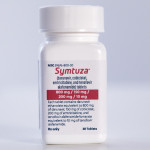Taking an antiretroviral regimen with just a boosted protease inhibitor and one other antiretroviral (ARV) is as effective as taking a boosted protease inhibitor plus two additional medications, aidsmap reports.
Presenting their findings at the International Congress on Drug Therapy in HIV Infection (HIV Glasgow), researchers conducted a meta-analysis of seven published studies that assessed two-drug boosted protease inhibitor regimens compared with three-drug boosted protease inhibitor treatments.
When researchers categorize how many ARVs are in a regimen, they do not count the booster drug, which in the case of the trials included in this analysis was Norvir (ritonavir).
The GARDEL trial investigated the nucleoside/nucleotide reverse transcriptase inhibitor (NRTI) Viread (tenofovir disoproxil fumarate, or TDF) plus the boosted protease inhibitor Kaletra (lopinavir/ritonavir). The six other trials all included the NRTI Epivir (lamivudine) plus a boosted protease inhibitor, including Kaletra, in the KALEAD and OLE trials; Norvir-boosted Reyataz (atazanavir), in the ATLAS-M and SALT trials; or Norvir-boosted Prezista (darunavir), in the DUAL-Gesida trial.
Between the seven studies, there were 1,635 HIV-positive participants, including 603 people who began treatment for the first time.
After 48 or 96 weeks of treatment, depending on the study, 83.6 percent of those treated with two drugs had a viral load below 50, compared with 80.6 percent of those treated with three ARVs. This difference was not statistically significant, meaning it may have been driven by chance.
There was also no statistically significant difference between the rate of those who experienced virologic failure on a two-drug regimen (5 percent) or a three-drug regimen (4.5 percent) or those who developed drug resistance in either group (0.7 percent of each group).
In the six studies including Epivir, 1.6 percent of participants taking two ARVs stopped treatment compared with 3.1 percent of those taking three ARVs, a difference that was statistically significant.
To read the aidsmap article, click here.







1 Comment
1 Comment